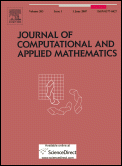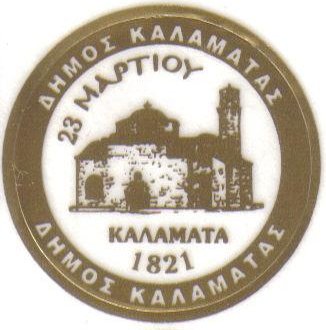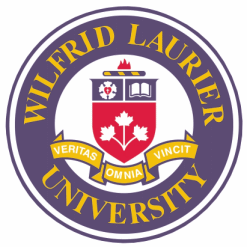|
 |
 N. Apostolatos (University of Athens) N. Apostolatos (University of Athens)
 N. Artemiadis (Academy of Athens) N. Artemiadis (Academy of Athens)
 D. Bertsekas (Massachusetts Institute of Technology MIT) D. Bertsekas (Massachusetts Institute of Technology MIT)
 C. Dafermos (Brown University) C. Dafermos (Brown University)
 A. Fokas (Academy of Athens & University of Cambridge) A. Fokas (Academy of Athens & University of Cambridge)
 A. Hadjidimos (University of Thessaly) A. Hadjidimos (University of Thessaly)
 E. Houstis (University of Thessaly) E. Houstis (University of Thessaly)
 P. Ligomenides (Academy of Athens) P. Ligomenides (Academy of Athens)
 G. Nicolis (Academy of Athens & Université Libre de Bruxelles) G. Nicolis (Academy of Athens & Université Libre de Bruxelles)
 C. Tsallis (Brazilian Academy of Sciences & Santa Fe Institute, USA) C. Tsallis (Brazilian Academy of Sciences & Santa Fe Institute, USA)
|
 N. Artemiadis (Academy of Athens) N. Artemiadis (Academy of Athens)
Title:
Educational Systems in Mathematics and Other Related Topics.
 D. Bertsekas (Massachusetts Institute of Technology MIT) D. Bertsekas (Massachusetts Institute of Technology MIT)
Title:
Approximate Solution of Very Large Linear Systems of Equations by Simulation by Dimitri P. Bertsekas (Massachusetts Institute of Technology) [joint research with Janey Yu (University of Helsinki)]
Abstract:
We consider linear fixed point equations, and approximation of the solution by
projection on a low-dimensional subspace. We propose stochastic iterative
algorithms, based on simulation, which converge to the approximate solution and
are suitable for very large-dimensional problems. The methodology generalizes
recent approximate dynamic programming methods, which solve a projected form of
Bellman's equation by using simulation-based approximations to this equation,
or by using a projected value iteration method.
 C. Dafermos (Brown University) C. Dafermos (Brown University)
Title:
Hyperbolic Balance Laws with Dissipation
Abstract:
Global BV solutions will be constructed to the Cauchy problem for hyperbolic
systems of balance laws with dissipative sources induced by relaxation
mechanisms.
 A. Fokas (Academy of Athens & University of Cambridge) A. Fokas (Academy of Athens & University of Cambridge)
Title:
Integrability, boundary value problems and imaging.
Abstract:
Ideas from the theory of nonlinear integrable PDEs have led to the introduction
of a new method for solving boundary value problems. This is turn has led to
new techniques for the numerical integration of linear evolution PDEs and for
elliptic PDEs in a convex polygon. In addition, ideas from integrable PDEs have
led to new developments in medical imaging. In this talk, some of these recent
developments will be reviewed.
 A. Hadjidimos (University of Thessaly) A. Hadjidimos (University of Thessaly)
Title:
Using Extrapolation for the Solution of the Linear Complementarity Problem [joint work with Michael Tzoumas (University of Ioannina)]
Abstract:
The Linear Complementarity Problem (LCP) has many applications as, e.g., in the solution of
Linear and Convex Quadratic Programming, in Free Boundary Value problems of Fluid Mechanics,
etc. In the present work we consider the case where the matrix coefficient A &isin Rn,n of LCP
is a positive definite matrix. Considering a known iterative method for the solution of LCP we
introduce the principle of Extrapolation and find the best extrapolation parameter &omega for which the
corresponding extrapolated iterative scheme converges asymptotically faster. Various simple and
more complicated numerical examples show that it is worth using extrapolation to solve an LCP.
 E. Houstis (University of Thessaly) E. Houstis (University of Thessaly)
Title:
Mathematics in the Knowledge Economy
Abstract:
The knowledge economy (KE) can be viewed as the combination of information and
computer technologies (ICT) and highly skilled labor to produce economic
benefits for the whole of our society. Education and Innovation are two of the
pillars of this new economy. ICT technologies are becoming part of every
productive organization of the human enterprise, from manufacturing to
entertainment, telecommunications, transportation and education. ICT is
changing the way we deliver, consume, and administer education. Today, we are
educating a new generation of engineers and scientists raised on "Sesame
Street" like programs, where learning through dynamic visual imagery is
emphasized. This generation is immersed in an electronic media world surrounded
by television, MP3 music boxes, multimedia cellular phones and Bluetooth/WiFi
communication devices, digital cameras, internet cafeΜ^Α, electronic games and
toys. Against this background, interactive multimedia based learning is
becoming the norm. At the same time, mathematics is increasingly used in almost
all areas of human activity and recognized as the basis of KE. It is the
language in which knowledge is expressed for solving problems with computers.
However, mathematics as a discipline affecting only a small minority of the
so-called mathematically gifted people. In this presentation, we will examine
proposals to reconfigure the way we educate in this discipline the next
generation of engineers & scientists in the context of KE and present some
tools for modeling "innovation" in the design of new "products".
 P. Ligomenides (Academy of Athens) P. Ligomenides (Academy of Athens)
Title:
The Reality of Mathematics1
Abstract:
The unreasonable effectiveness of mathematics. Why are the laws of nature
mathematical?? Why is the physical world knowable?? Computability,
Compressibility, and the Physical laws. Scientific mysticism.
1 Π.Α. Λιγομενίδη, Η Φλούδα του Βερίκοκου, Ελληνικά Γράμματα, 2003
 G. Nicolis (Academy of Athens & Université Libre de Bruxelles) G. Nicolis (Academy of Athens & Université Libre de Bruxelles)
Title:
Computational Science and Complex Systems Research
Abstract:
Complex systems are ubiquitous in nature, technology and everyday life. They
can give rise under certain conditions to a multitude of states associated with
such properties as the spontaneous emergence of large scale self-organizing
patterns, adaptation, evolution, or the generation and processing of
information. These phenomena unfold on a wide spectrum of space and time scales
and need thus to be analyzed by means of a bottom-up, multilevel approach
integrating microscopic as well as macroscopic formulations, deterministic as
well as probabilistic views, structural as well as dynamical aspects. In this
presentation some key problems of present day complex systems research are
reviewed and the challenges posed by them to computational science are brought
out. Examples of successful cross-fertilization between the two fields are
given and a number of significant problems that remain open are identified.
 C. Tsallis (Brazilian Academy of Sciences & Santa Fe Institute, USA) C. Tsallis (Brazilian Academy of Sciences & Santa Fe Institute, USA)
Title:
Entropy, nonextensive statistical mechanics, and numerical applications.
Abstract:
The usual Boltzmann-Gibbs-Shannon entropy S_{BGS} and its associated
statistical mechanics are well known to be adequate for systems whose elements
are not too strongly correlated. Whenever this simplifying hypothesis is not
satisfied, we can use instead the nonadditive entropy S_q (with S_1 = S_{BGS}),
and its associated nonextensive statistical mechanics. The whole theory
generalizes that of Boltzmann-Gibbs. Applications to areas such as global
optimization techniques, signal and image processing, will be presented as
well. Bibliography: http://tsallis.cat.cbpf.br/biblio.htm
|
|

 CALL FOR PAPERS -- Journal of Computational and Applied Mathematics (NEW)
CALL FOR PAPERS -- Journal of Computational and Applied Mathematics (NEW)
 NumAn 2007 Proceedings (NEW)
NumAn 2007 Proceedings (NEW)
 NumAn 2007 Photo Gallery (NEW)
NumAn 2007 Photo Gallery (NEW)
 Tutorial Slides
Tutorial Slides
 Conference Program
Conference Program
Proceedings Volume
 The contributions accepted for presentation will be published and distributed
at the conference. Full papers presented at the Conference may be submitted for
publication in a Special Issue of Journal of Computational and Applied
Mathematics (Elsevier). Details for paper submission to this special issue will
be announced at the conference.
The contributions accepted for presentation will be published and distributed
at the conference. Full papers presented at the Conference may be submitted for
publication in a Special Issue of Journal of Computational and Applied
Mathematics (Elsevier). Details for paper submission to this special issue will
be announced at the conference.
|









